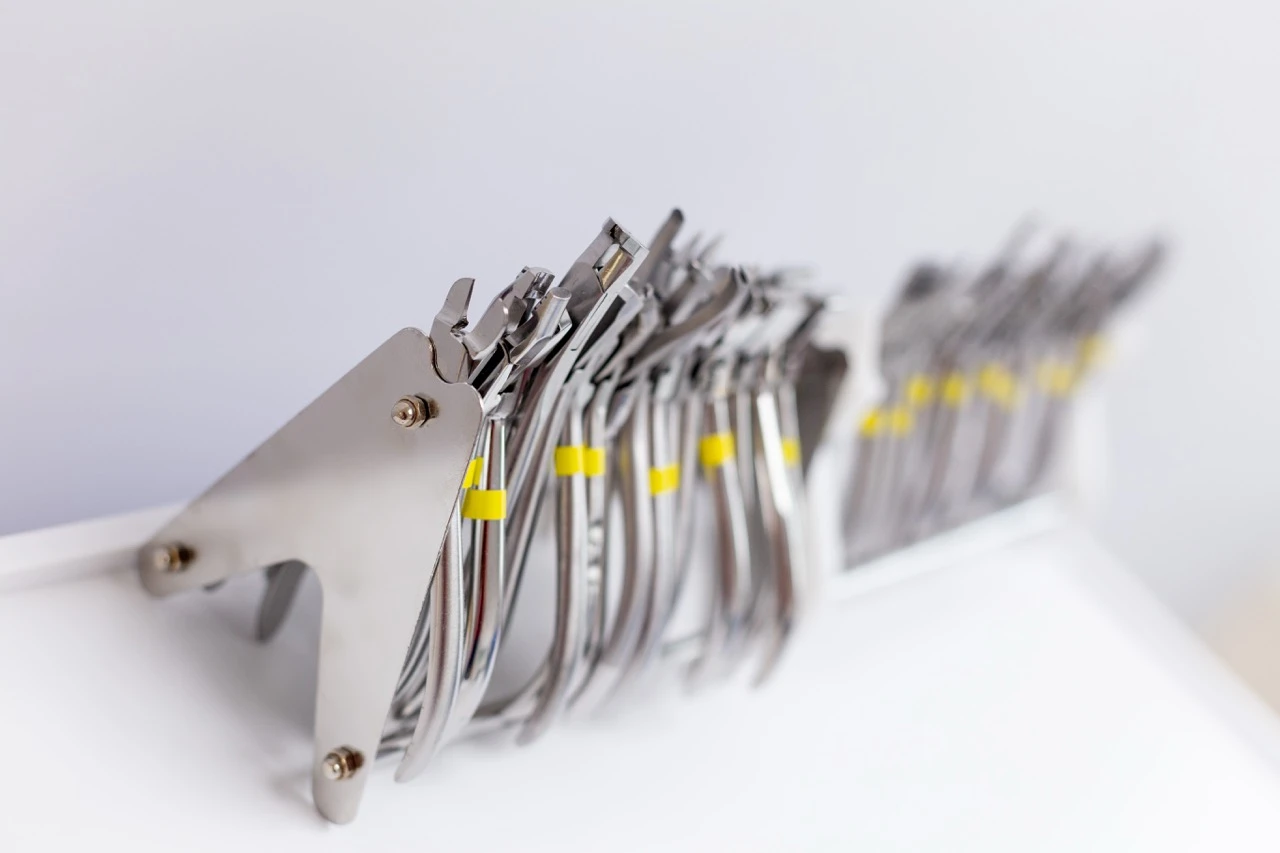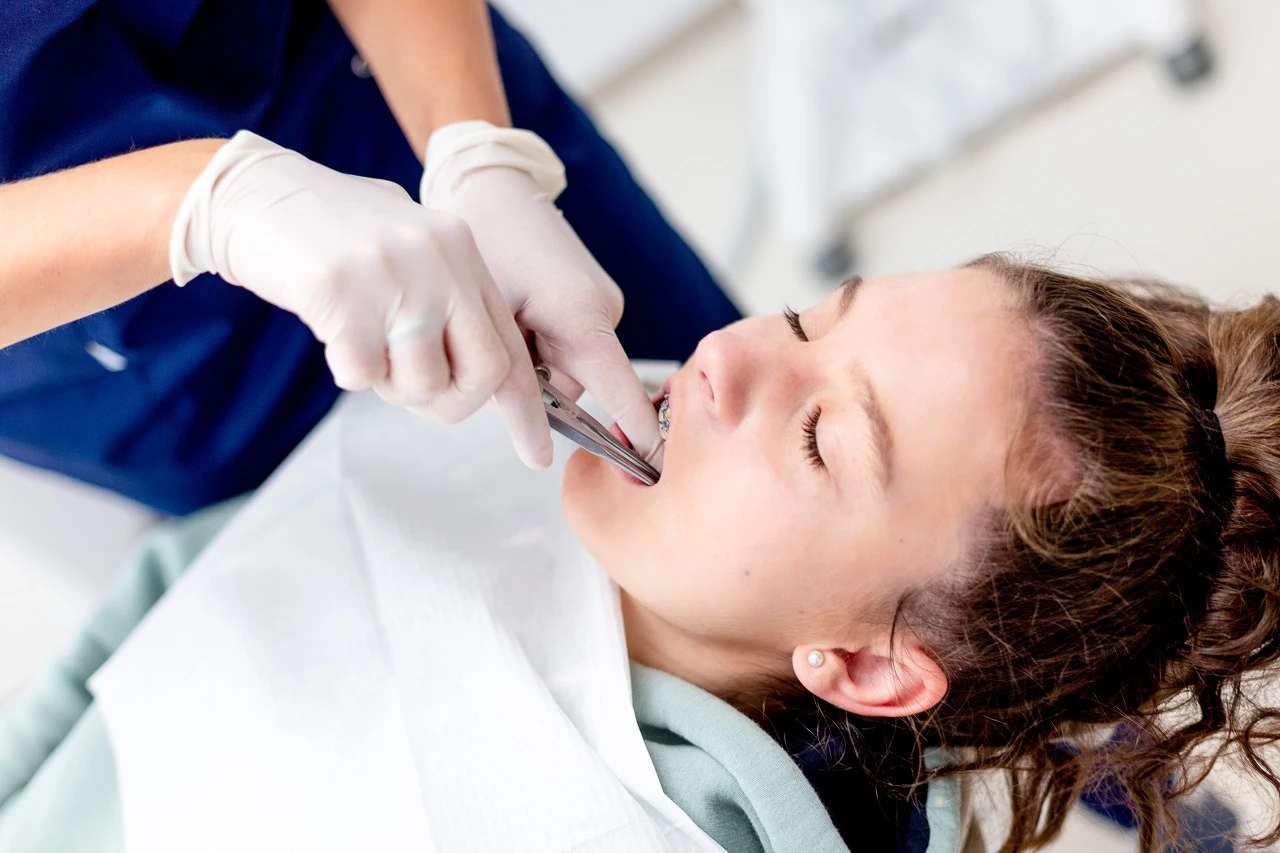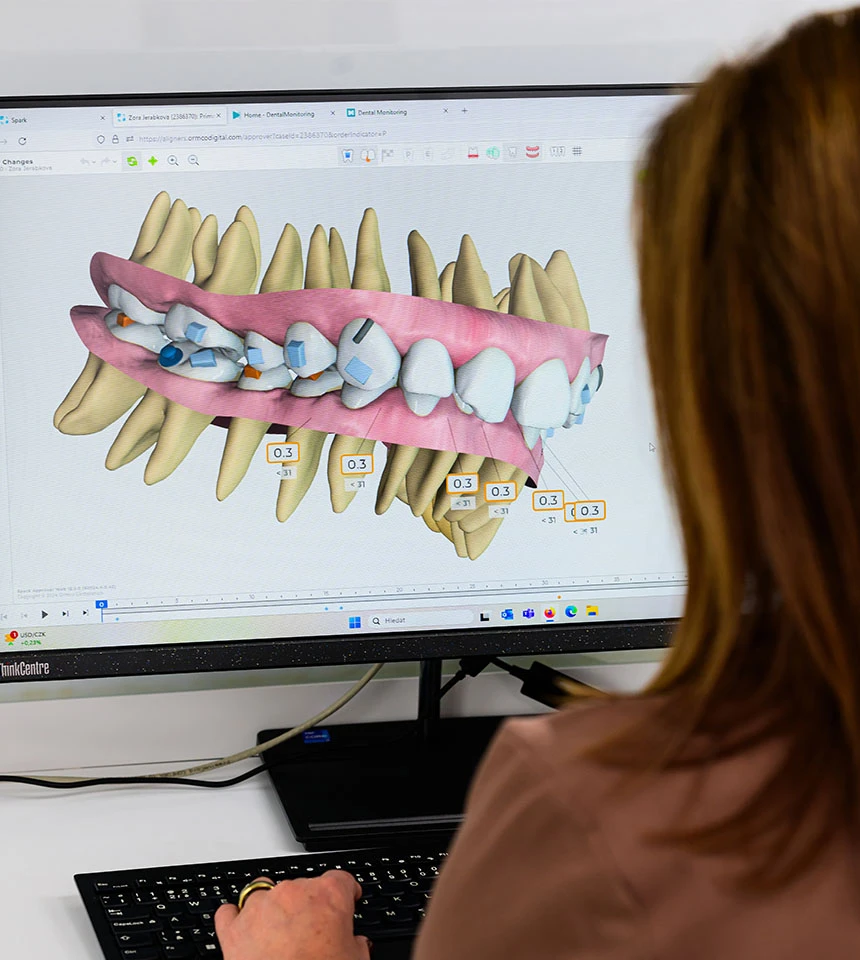Fixed appliance treatment is the most common treatment method, which consists of bonding rings and locks to the front of the tooth crowns. A wire arc is attached to these components.
At the beginning of treatment, the fixed appliance is fitted and patients are instructed on the restrictions they must make in their diet to avoid damage to the appliance. This fixed appliance adjusts the position of the teeth and is adjusted during regular visits so that the resulting position of the teeth is as good as possible both aesthetically and functionally. Emphasis is also placed on proper hygiene to prevent damage to tooth enamel (decalcification) or tooth decay.
After the appliance is removed, a so-called retention is performed, i.e. a thin wire is placed on the back of the dental arch to maintain the resulting effect.




